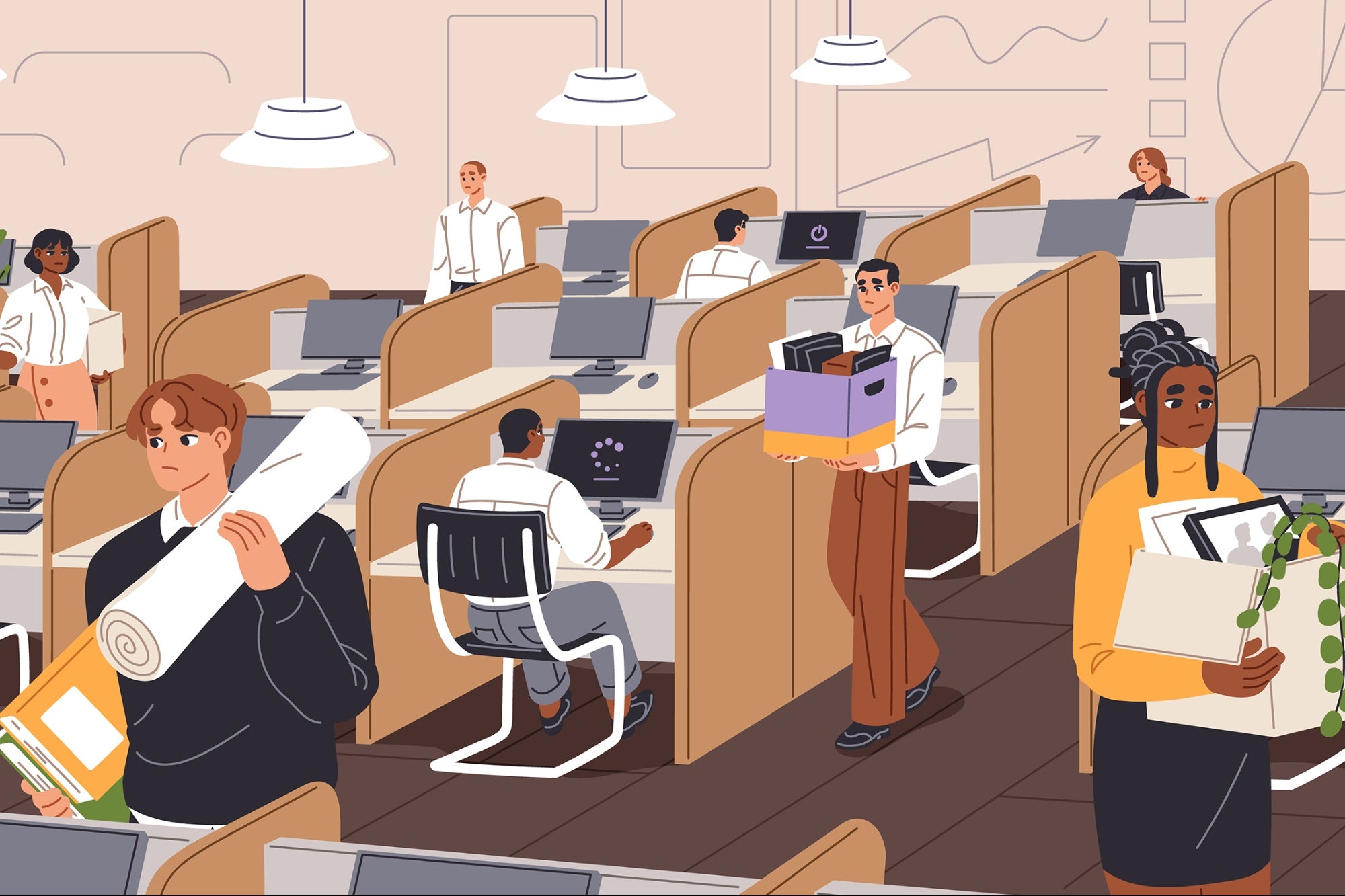4 Surprising Predictors of Workplace Happiness It is all about the details.
By Jane Porter Edited by Dan Bova
This story originally appeared on Help Scout

One recent morning, all I saw from the window by my desk was a blanket of gray where the Manhattan skyline had been.
The sky, the streets, and the buildings were all uniformly covered in fog -- one of those mornings when the weather outside finds a way to worm itself into your psyche and weigh you down.
Much research has shown the connection between our environment and our mood, so it should come as no surprise that environmental factors play a significant role in predicting our workplace happiness.
With a busy day ahead that morning, I had no time for sluggishness. I propped a pink daylily in a vase beside my computer, plugged in the sun lamp I lug out from the closet each winter, and turned on some John Coltrane. Already things were looking up.
Often, it's the details we don't pay much attention to that have the greatest effects on our workplace happiness, and these don't simply stop at environmental factors. "How people perform is inextricably connected to how they feel, but interior life remains terra incognita in most companies," writes Tony Schwartz, founder of the Energy Project, in a white paper with Harvard Business Review.
From the remote worker toiling away in his or her home office to the business leader who is fostering a productive and creative space for a team of passionate employees, having a happy workplace is tantamount to doing great work. Here are four predictors of workplace happiness and how you can implement them into your daily life.
1. Make time to see the light
It's easy to lose sight of just how significant our surroundings are to having a happy workplace. Daylight, in particular, plays an important role in setting our happiness and energy levels. According to research out of Northwestern Medical and the University of Illinois, people who sit near a window and have access to natural light throughout the day sleep an average of 46 minutes longer than their windowless counterparts, are more physically active, and score higher on quality of life measures. "[Office] workers are a group at risk because they are typically indoors often without access to natural or even artificial bright light for the entire day," says Phyllis Zee, a neurologist and sleep specialist at Northwestern Medical.
When I'm unable to get my daylight the good old-fashioned way (read: sun), I turn to a light therapy lamp to get that jolt of morning light that can be almost impossible to find on bleak winter mornings. "There is increasing evidence that exposure to light, during the day – particularly in the morning – is beneficial to your health via its effects on mood, alertness and metabolism," Zee says.
2. Take your burnout inventory
There's a chance it's not just daylight you're lacking and that you may actually be burnt-out. University of California Berkeley psychologist Christina Maslach developed a widely-used method for measuring burnout levels at work with a self-administered test called the Maslach Burnout Inventory. The questionnaire tests three areas of your work life: burnout, or depressive anxiety syndrome, which includes tiredness at the very thought of work; depersonalization, or a lack of empathy and cynicism toward the people you work with; and reduced personal achievement, or negative feelings toward yourself and your performance at work.
According to research in the Journal of Occupational Health Psychology, it's critical for employees at risk of burnout to make a concerted effort to spend regular time away doing non-work-related activities. Challenging as this may seem, simply keeping your phone off in the evenings and on weekends can help create that psychological distance that can make it easier to feel positive and engaged in your work when you get back to it.
3. A little generosity goes a long way
As a writer and editor who works remotely, I have to remind myself to establish a personal connection with the editors I work with who I may never actually meet in person. Amid the busyness of work, particularly when you're not in the same room as the people you're collaborating with—be it clients or co-workers—it's all too easy to forget that a little gratitude really does go a long way.
Berkeley's Greater Good Science Center found that generosity activates a primitive part of the brain often linked to the pleasure we get from food and sex. In other words, according to Santi, donating time or money toward a good cause affects two areas of the brain associated with reward: the dopamine-rich ventral tegmental area, and the subgenual area, which is activated when we see someone we love.
4. Designate regular time for creativity
When we run out of personal time, physical exercise is often the first thing to get nixed from our schedules, and when we're busy at work, exercising our creative thinking is similarly the first thing to get knocked off the list. According to Schwartz's survey of the 20,000 participants, 72 percent reported they don't have regular time for creative or strategic thinking at work and even worse, 55 percent said they didn't have opportunities to do what they most enjoyed.
Scheduling creative and strategic thinking as part of your daily routine can help counter that feeling of burnout and give you more meaning in the office. This could be as little as writing in a notebook for 10 minutes each morning or during lunch. It also means making the work you most enjoy a priority—not because you don't care about what's most important to your job, but because your well-being and happiness at work is a large part of the equation.
Think beyond the obvious when it comes to creating a happy workplace. Environmental factors such as daylight play an important role, but so does having an awareness of just how burnt-out you are, setting aside time to do rewarding work that feeds you emotionally, and carving out space for regular creative thinking. Whether the sun is shining outside or not, with a little forethought, it's within your power to control how happy your workday will be.












